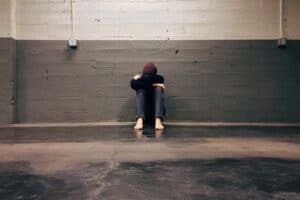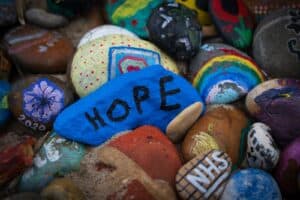… and when do we need to seek help?
As a child of a parent that suffered from depression, I know what it is like ‘when living hurts’, and also how devastating it can be for the close and loved ones of the depressed person. It is an experience full of sadness, chaos, fear, loneliness and despair.
 Almost everyone has had some encounter with ‘depression’. It could be a family member, a close friend, or oneself, at some time in our life. We all get sad, depressed, in the dumps… Whether it is flunking a midterm, failing a test, missing a deadline, being late for a flight, breaking up with a loved one… shit happens, right?
Almost everyone has had some encounter with ‘depression’. It could be a family member, a close friend, or oneself, at some time in our life. We all get sad, depressed, in the dumps… Whether it is flunking a midterm, failing a test, missing a deadline, being late for a flight, breaking up with a loved one… shit happens, right?
Yes, we all know that sinking feeling of being down, having a rock on our chest, not wanting to get up in the morning, or out of bed, and just not wanting to face the normal everyday chores of living.
BUT — it is when that feeling doesn’t go away; when it stays around for a long time; when that rock on our chest down not light up, when the sense of doom and dread and hopelessness and helplessness settles into a daily occurrence — that is when it becomes worrisome!
 The normal ups and downs of life mean that everyone feels sad or has ‘the blues’ from time to time. But if emptiness, despair and loss of hope have taken over your life, and won’t go away, you may have depression. Depression makes it tough to function and enjoy life like you once did. Just getting through the day can be overwhelming.
The normal ups and downs of life mean that everyone feels sad or has ‘the blues’ from time to time. But if emptiness, despair and loss of hope have taken over your life, and won’t go away, you may have depression. Depression makes it tough to function and enjoy life like you once did. Just getting through the day can be overwhelming.
In her article on MindBodyGreen (a website dedicated to health), Kathi Moorhead writes: “I suffer from depression. I don’t just feel blue on bad days. I don’t just have so-so days that improve with yoga or time with friends. My depression is physiological, relentless, and unforgiving. When it strikes, even the simplest of tasks — like getting dressed or taking a shower — seem insurmountable.”
Understanding the signs, symptoms, causes, and treatment of depression is the first step to overcoming the problem.
What is depression? How do we know it is depression?
 Sadness or downswings in mood are normal reactions to life’s struggles, setbacks, and disappointments. Many people use the word “depression” to explain these kinds of feelings, but depression is much more than just sadness. Some people describe depression as “living in a black hole” or having a feeling of impending doom. However, some depressed people don’t feel sad at all—they may feel lifeless, empty, and apathetic, or men in particular may even feel angry, aggressive, and restless. Whatever the symptoms, depression is different from normal sadness in that it engulfs your day-to-day life, interfering with your ability to work, study, eat, sleep, and have fun. The feelings of helplessness, hopelessness, and worthlessness are intense and unrelenting, with little, if any, relief.
Sadness or downswings in mood are normal reactions to life’s struggles, setbacks, and disappointments. Many people use the word “depression” to explain these kinds of feelings, but depression is much more than just sadness. Some people describe depression as “living in a black hole” or having a feeling of impending doom. However, some depressed people don’t feel sad at all—they may feel lifeless, empty, and apathetic, or men in particular may even feel angry, aggressive, and restless. Whatever the symptoms, depression is different from normal sadness in that it engulfs your day-to-day life, interfering with your ability to work, study, eat, sleep, and have fun. The feelings of helplessness, hopelessness, and worthlessness are intense and unrelenting, with little, if any, relief.
Are you depressed? If you identify with several of the following signs and symptoms (from WebMD.com), and they just won’t go away, you may be suffering from clinical depression:
- you can’t sleep or you sleep too much
- you can’t concentrate or find that previously easy tasks are now difficult
- you feel hopeless and helpless
- you can’t control your negative thoughts, no matter how much you try
- you have lost your appetite or you can’t stop eating
- you are much more irritable, short-tempered, or aggressive than usual
- you’re consuming more alcohol than normal or engaging in other reckless behavior
- you have thoughts that life is not worth living (seek help immediately if this is the case)
Depression can be situational. When a stressful situation is particularly hard to cope with, we react with symptoms of sadness, fear, or even hopelessness — a type of reaction that’s often referred to as situational depression. Unlike major depression, when you are overwhelmed by depression symptoms for a long time, situational depression usually goes away once you have adapted to your new situation.
Depression can also be seasonal, related to change of season and the light pattern. Seasonal affective disorder (SAD) is a type of depression that’s related to changes in seasons — SAD begins and ends at about the same times every year. If you’re like most people with SAD, your symptoms start in the fall and continue into the winter months, sapping your energy and making you feel moody. Less often, SAD causes depression in the spring or early summer. Treatment for SAD may include light therapy (phototherapy), psychotherapy and medications. Don’t brush off that yearly feeling as simply a case of the “winter blues” or a seasonal funk that you have to tough out on your own. Take steps to keep your mood and motivation steady throughout the year.
 Depression and suicide risk
Depression and suicide risk
Depression is a major risk factor for suicide. The deep despair and hopelessness that goes along with depression can make suicide feel like the only way to escape the pain. If you have a loved one with depression, take any suicidal talk or behavior seriously and learn to recognize the warning signs. Warning signs of suicide include:
- Talking about killing or harming one’s self
- Expressing strong feelings of hopelessness or being trapped
- An unusual preoccupation with death or dying
- Acting recklessly, as if they have a death wish (e.g. speeding through red lights)
- Calling or visiting people to say goodbye
- Getting affairs in order (giving away prized possessions, tying up loose ends)
- Saying things like “Everyone would be better off without me” or “I want out”
- A sudden switch from being extremely depressed to acting calm and happy
If You Are Feeling Depressed or Suicidal…
When you’re feeling extremely depressed or suicidal, your problems don’t seem temporary—they seem overwhelming and permanent. But with time, you will feel better, especially if you reach out for help. If you are feeling suicidal, know that there are many people who want to support you during this difficult time, so please reach out for help! Read Suicide Help or call 1-800-273-TALK in the U.S. or visit IASP or Suicide.org to find a helpline in your country.
If Someone You Love is Depressed or Suicidal…
If you think a friend or family member is depressed or considering suicide, express your concern and seek professional help immediately. Talking openly about suicidal thoughts and feelings can save a life!
 HOPE – is there help for depression? Do not give up!! There are many ways to treat depression.
HOPE – is there help for depression? Do not give up!! There are many ways to treat depression.
Depression Treatments
Depression Medicines
There are many types of depression medicines today. Learn about antidepressants — the effects and side effects — and work with your doctor to select the best depression medicine for your symptoms.
Psychotherapy
Sometimes we don’t want to “talk about it.” Find out how talk therapy works to lift mood and help patients with depression improve coping skills and bring hopefulness back. There are many other forms of depression such as post-partum depression, post-traumatic stress depression, teen depression and others which are not covered in this blog post. All forms of depression are serious and need attention.
How can I help? When living hurts, you don’t need to do it alone. I offer confidential, cognitive, behavioral and experiential individual therapy sessions in Nevada City and Sacramento.
- Call me for a free consultation at 530-692-0680
- Visit my website
